 |
 |
 |
| |
Outcomes following liver transplantation from HCV-seropositive
donors to HCV-seronegative recipients
Good Outcomes With Liver Transplants From HCV Viremic and Nonviremic Donors
|
| |
| |
EASL Congress 2024, June 5-8, 2004, Milan
Mark Mascolini
Overall survival 36 months after liver transplant from a donor with nonviremic or viremic HCV (HCV detectable in blood) to a recipient without HCV stood at 96% in a 103-transplant analysis by Mayo Clinic researchers in Arizona and Florida [1]. Other results differed little between people who got transplants from HCV-viremic and HCV-nonviremic donors.
The shortage of livers for transplantation could be eased by using donors with HCV because direct-acting antivirals (DAAs) cure HCV infection that may result from such transplants. In 2020 a Mayo Clinic team reported outcomes in 34 HCV-negative people who received liver transplants from people with HCV [2]. None of 14 people whose organ came from a nonviremic HCV donor became HCV viremic. All 20 people whose organ came from a viremic HCV donor became viremic, but all had a sustained virologic response after prompt DAA therapy. Graft survival stood at 100% in both groups.
The retrospective analysis presented at EASL 2024 included 103 HCV RNA-negative liver transplant recipients, 52 of whom received a liver from an HCV-viremic donor and 51 of whom received an organ from a nonviremic donor [2]. Viremic donors were slightly but significantly younger than nonviremic donors (37 vs 41 years, P = 0.01). Variables that did not differ significantly between viremic and nonviremic donor groups included proportion of men (63% overall), race/ethnicity (whites 79%, Hispanics 12%, blacks 6%), and body mass index (median 26 kg/m2 overall).
Age did not differ significantly between transplant recipients with an HCV viremic or nonviremic donor (59 years overall). Nor were there significant differences by gender (about half women and half men), race or ethnicity (overall 84% white), or body mass index (overall median 27.5 kg/m2).
MELD score at listing for transplantation did not differ significantly between recipients whose liver came from a viremic donor or a nonviremic donor (18.0 and 20.0, P = 0.10). (MELD score is a formula used to assign priority for most liver transplant candidates 12 years old and older.) Cause of liver disease proved similar in recipients of livers from viremic and nonviremic donors (alcohol-associated cirrhosis in 28% overall; metabolic-associated steatotic liver disease [MASLD] in 31% overall). Nor did the two recipient groups differ significantly in months from listing to transplant (median 2.1 months overall), MELD at transplant (22.0 overall), simultaneous kidney transplant (21% overall), or liver retransplantation (12% overall).
Among 52 people getting a liver from an HCV-viremic donor, 50 became viremic after transplantation and 2 remained nonviremic. Among 51 people whose liver came from a nonviremic donor, 50 remained nonviremic and 1 became viremic. A significantly higher percentage of transplant recipients with HCV-nonviremic donors had a peak bilirubin between weeks 3 and 12 that was 1.5 times the upper limit of normal (96% vs 83%, P = 0.02), but higher peak bilirubin measures did not differ between the viremic and nonviremic groups. Rates of acute cellular rejection were statistically similar in the two group (15% viremic and 10% nonviremic, P = 0.56),
Median follow-up after transplantation did not differ between people who had viremic versus nonviremic donors (23.3 months overall). The groups did not differ in numbers with graft failure (0 viremic, 1 nonviremic) or number who died (2 viremic, 1 nonviremic, 1 in each group attributed to cardiac causes). Forty-eight of 51 people had a sustained virologic response to DAA therapy and 3 people had missing values (including 1 person who died and 1 who moved to another country). Kaplan-Meier overall survival estimates at 12, 24, and 36 months were 99.0%, 95.9%, and 95.9%. Kaplan-Meier graft survival estimates at 36 months were 97.9% for people with HCV-nonviremic donors and 100% for those with viremic donors.
The Mayo team believes their results support wider use of grafts from HCV-seropositive donors. They hope transplant specialists will evaluate bigger samples of people who get transplants from viremic donors and will assess optimal duration of DAA therapy and other therapeutic options in these populations.
References
1. Liu MC, McCain J, Reitz I, et al. Outcomes following liver transplantation from HCV-seropositive donors to HCV-seronegative recipients. EASL Congress 2024, June 5-8, 2004, Milan. Abstract OS-064.
2. Aqel B, Wijarnpreecha K, Pungpapong S, et al. Outcomes following liver transplantation from HCV-seropositive donors to HCV-seronegative recipients. J Hepatol. 2021;74:873-880. doi: 10.1016/j.jhep.2020.11.005. https://pubmed.ncbi.nlm.nih.gov/33188903/
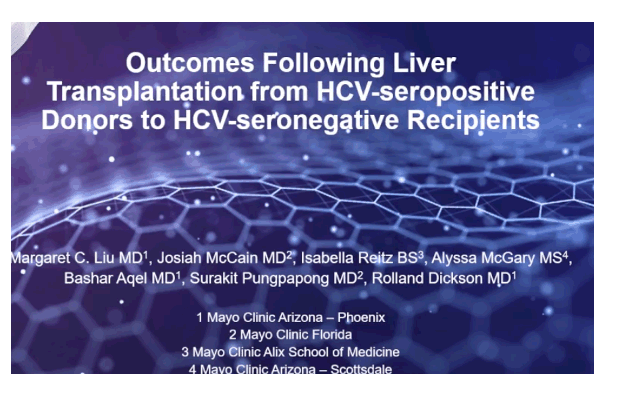
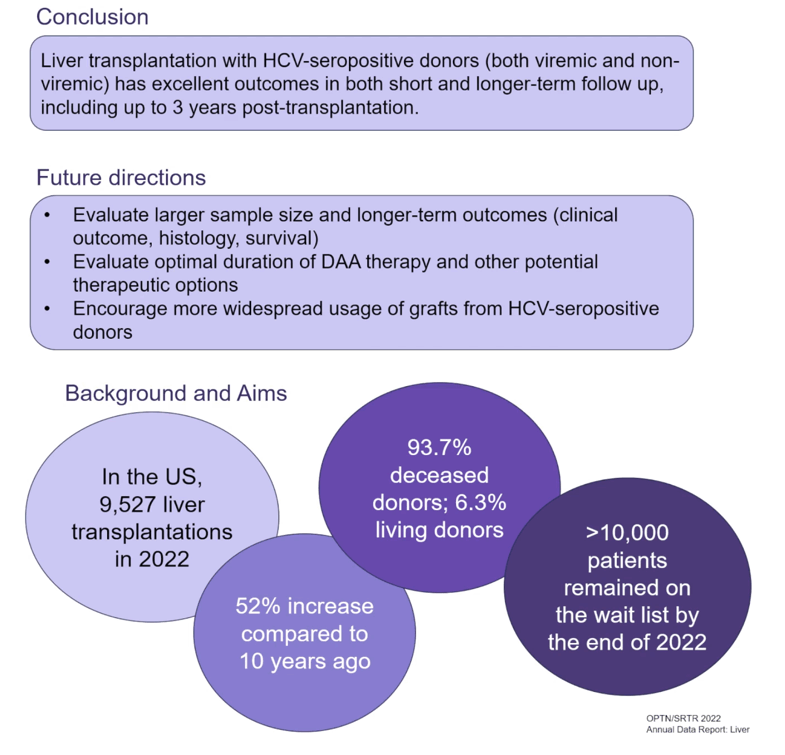
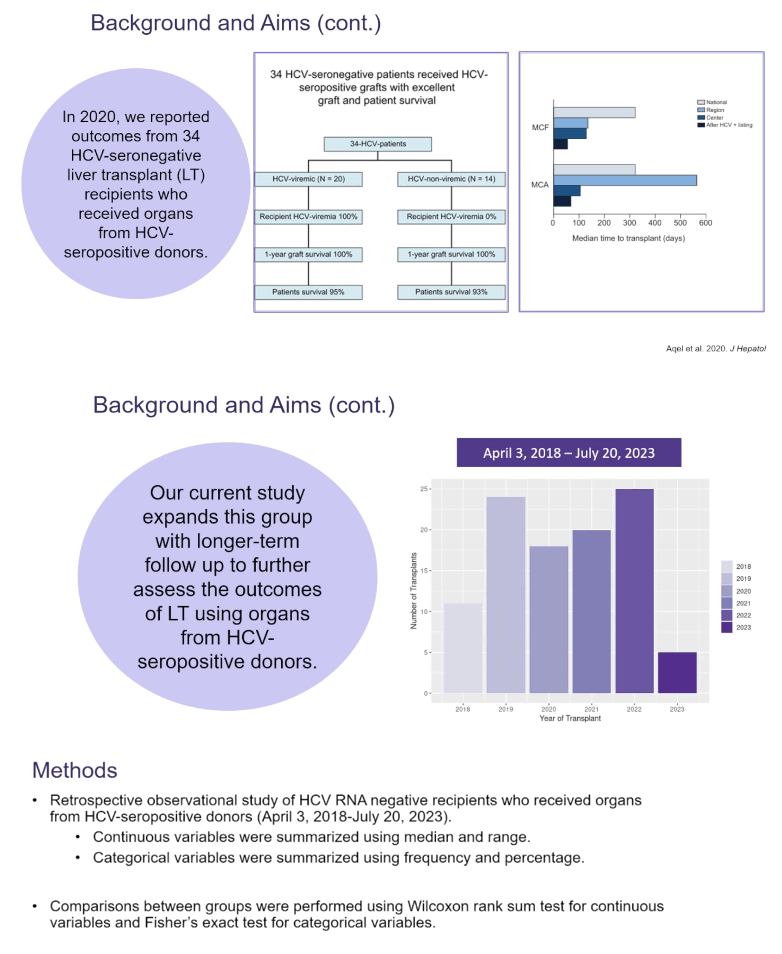
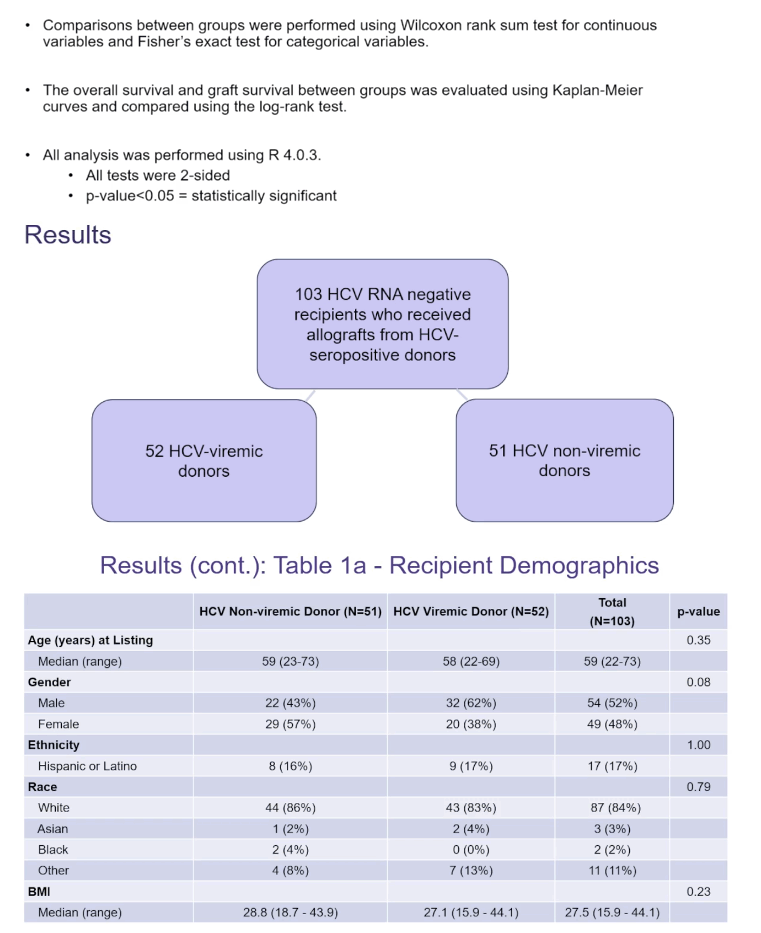
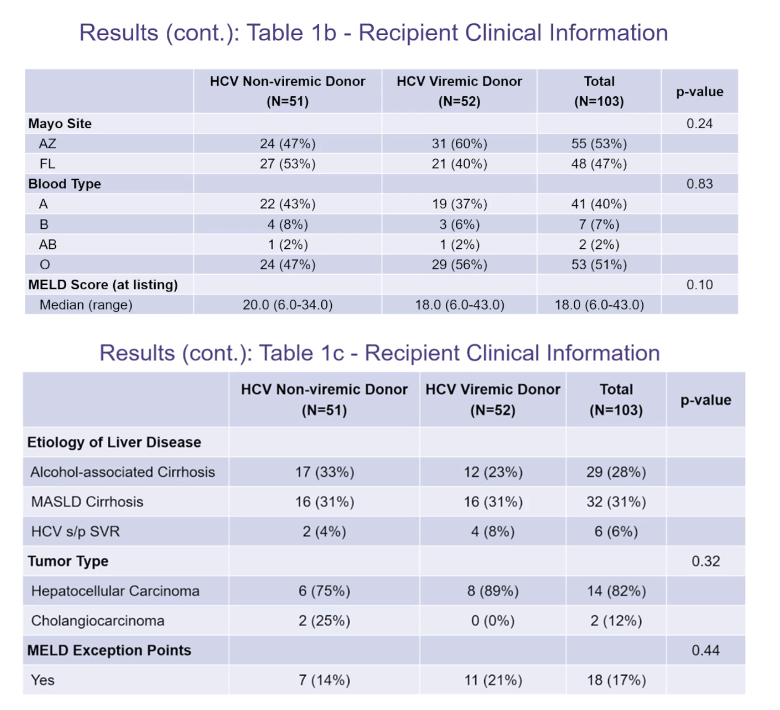
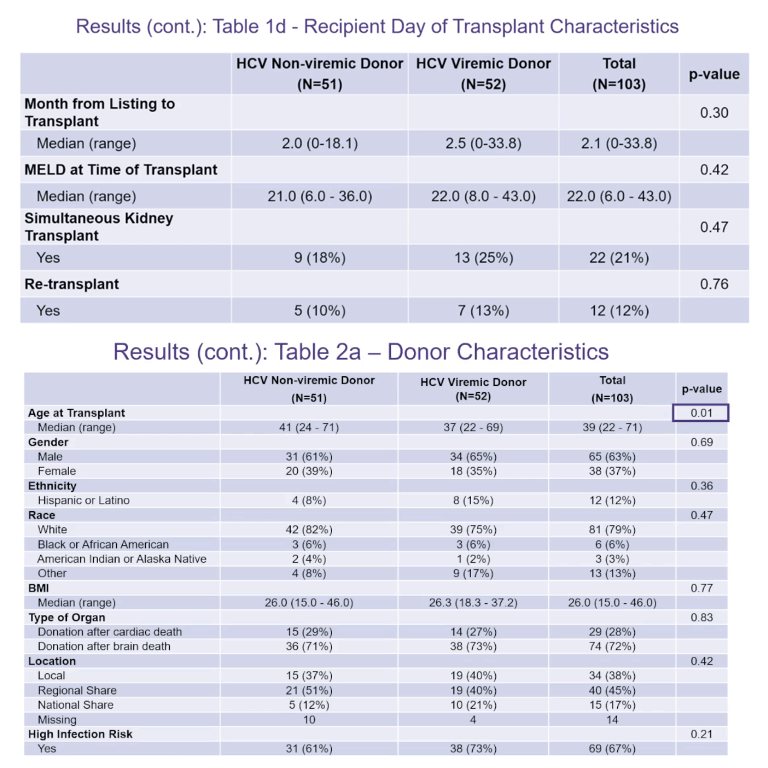
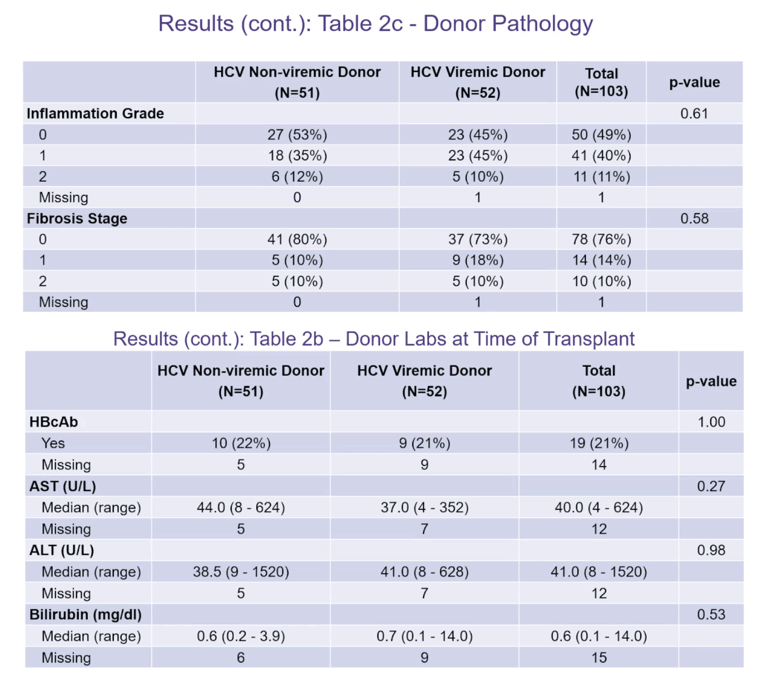
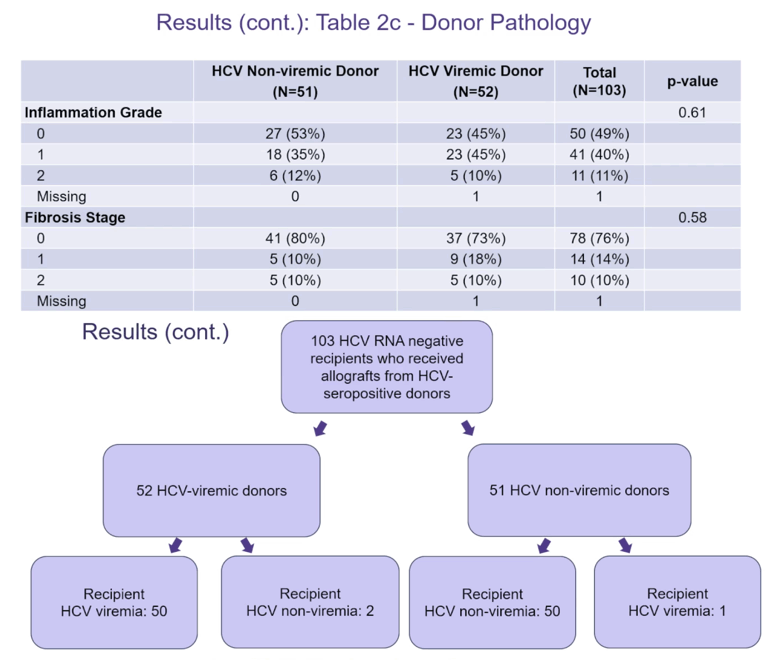
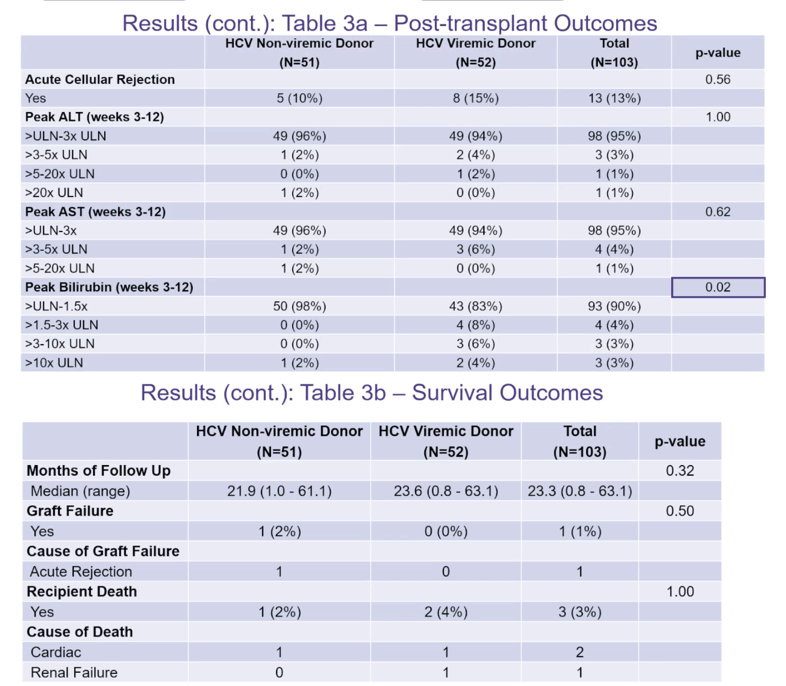
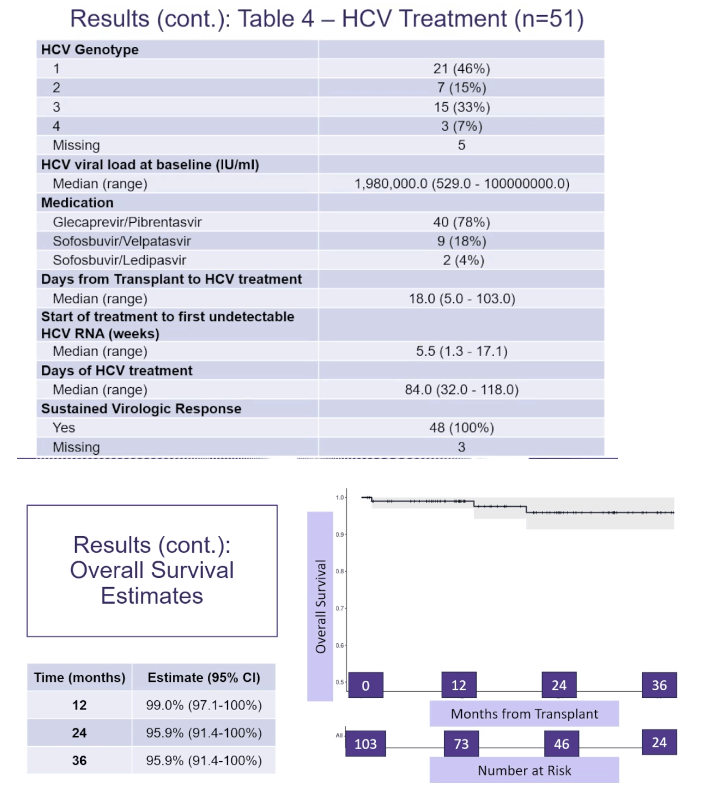
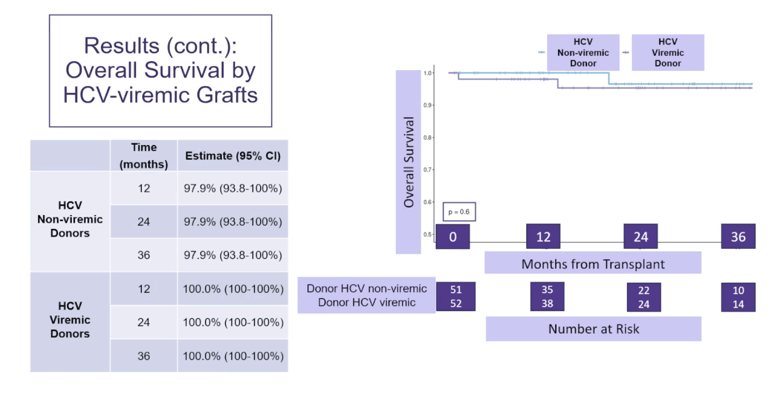
|
| |
|
 |
 |
|
|